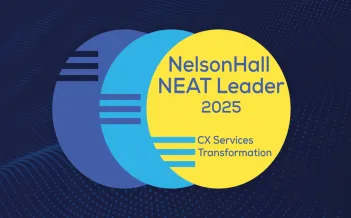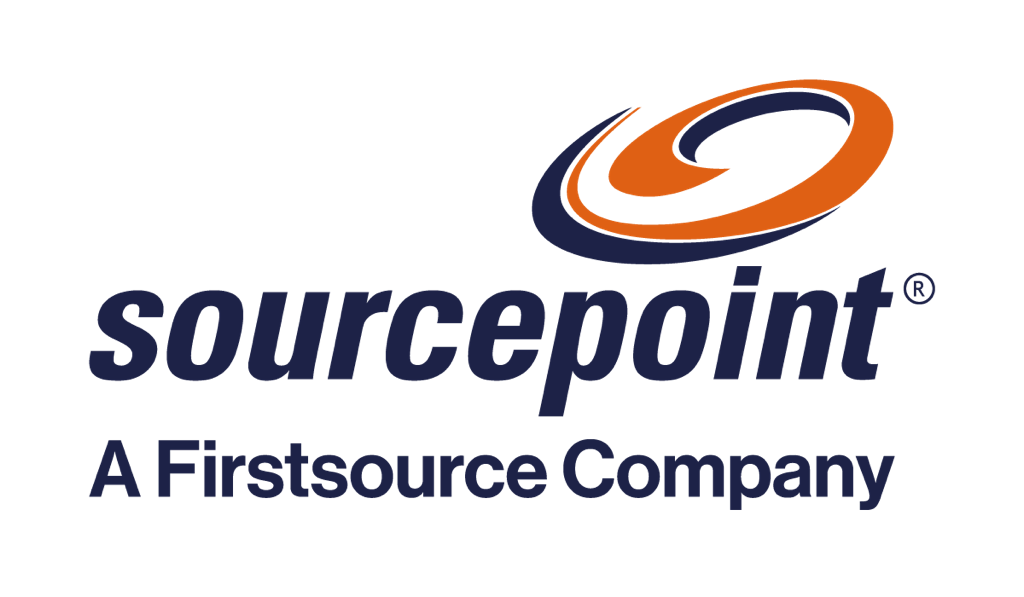Healthcare organizations are unknowingly absorbing a devastating hidden cost, one that's not itemized on any invoice but represents billions in lost revenue annually. This hidden cost isn't imposed by regulators or payers; it's the direct result of RCM fragmentation, where healthcare providers juggle multiple specialized vendors instead of working with one accountable partner.
The evidence is overwhelming: 100% of organizations using end-to-end RCM solutions report positive ROI or expect to within 1-2 years, with a 70% increase in adoption of end-to-end RCM platforms year-over-year. Yet half of the leading health organizations currently use multiple vendors, creating a massive opportunity for those willing to act decisively.
While the healthcare technology market celebrates point solutions and specialized automation tools, a troubling reality emerges: the more vendors you add to your RCM stack, the more money you lose. This isn't a technology problem; it's a systemic design flaw that's bleeding healthcare organizations dry.
The Fragmentation Trap
The healthcare industry has been dealing with a dangerous myth: that assembling the "best" point solution for each RCM function will create an optimal system. The reality is starkly different.
Average large healthcare practices now manage 6-8 distinct RCM vendors, with each vendor typically automating only 30-80% of their narrow specialty. Despite significant investments in automation, 70% of RCM processes still require manual intervention due to vendor gaps, and exception handling, the most critical and expensive part of RCM, falls entirely on your internal team. While 40% of healthcare providers outsource RCM functions, most still use fragmented approaches that multiply rather than solve their operational challenges.
Consider this: if coding vendors only address 25-30% of your total RCM needs and automate just 30-80% of that segment, you're looking at actual automation coverage of less than 24% of your total revenue cycle. The remaining 76% becomes your problem to solve, coordinate, and optimize, a burden that grows exponentially with each additional vendor relationship.
The True Cost of RCM Fragmentation: Beyond the Obvious
The Integration Cost
Every additional vendor creates exponential complexity that extends far beyond simple software integration. Data silos prevent holistic performance visibility, forcing your team into manual data transfers and creating bottlenecks that cascade throughout your organization. System incompatibilities require custom integrations costing $50,000-$200,000 each, while the ongoing maintenance of these connections demands dedicated IT resources that could be focused on strategic initiatives.
The Accountability Gap Cost
When something goes wrong in a fragmented RCM environment, accountability becomes a shell game. Point solution vendors deflect issues outside their narrow scope, leaving your team to coordinate resolution across multiple parties. The financial impact is staggering: a March 2024 MGMA poll found that 60% of medical group leaders reported an increase in their practices' claim denial rates compared to the same period in 2023, with denial rates now reaching as high as 10-15% according to industry analysis.
Each denied claim costs $25 for ambulatory providers and up to $118 for hospitals to rework, but the deeper problem is systematic neglect. Research shows that 65% of claim denials are never worked upon, resulting in an estimated 3% net revenue loss, money that simply vanishes due to coordination failures between disconnected vendors.
The Management Overhead Cost
Your clinical and administrative leaders become full-time vendor coordinators rather than strategic healthcare executives. The average practice spends 40+ hours monthly on vendor management, time that represents a $200,000+ opportunity cost when burnout forces employee turnover. More critically, strategic initiatives face constant delays while teams juggle vendor relationships, creating a cascade of missed opportunities for operational improvement and growth.
The Innovation Paralysis Cost
Fragmented systems can't evolve together, creating a technological dead end that becomes more expensive over time. Implementation cycles for system changes stretch to 18-24 months due to coordination complexity, while limited scalability emerges as each vendor operates under different capacity constraints. When market changes demand rapid responses, such as new regulatory requirements or payer rule modifications, fragmented systems simply can't adapt quickly enough to maintain a competitive advantage.
Why This Problem Is Accelerating (And Getting Worse)
Three industry trends are making RCM fragmentation more dangerous than ever before, creating a perfect storm that threatens organizational survival.
- Regulatory Complexity Explosion continues to intensify as new prior authorization requirements demand seamless front-to-back integration that fragmented systems simply cannot provide. The impact on patient care is measurable and disturbing: 93% of physicians report prior authorization delays affecting patient care, while 60% of medical group leaders reported an increase in claim denial rates in 2024. When regulatory changes occur, fragmented systems require coordination across multiple vendors, creating delays that can span months rather than weeks.
- Patient Financial Responsibility Growth has created a collection crisis that fragmented systems are uniquely unsuited to address. Patient collections dropped sharply to 47.8% in 2022-2023 from 54.8% in 2021, reflecting the industry's inability to adapt billing and collection processes to increased patient responsibility. Price transparency requirements demand integrated financial counseling capabilities that span the entire revenue cycle, but fragmented billing creates patient confusion and collection delays that compound over time.
- Margin Pressure Intensification has eliminated any tolerance for operational inefficiency. Healthcare margins averaging 2-4% leave no room for the 15-20% higher operational costs that fragmented RCM creates compared to integrated solutions. Competition for talent makes vendor management overhead unsustainable, while the administrative burden of coordinating multiple vendors prevents organizations from focusing resources on strategic growth initiatives.
The Single Accountable Partner Imperative
The solution isn't adding more vendors or optimizing existing fragmentation; it's fundamentally rethinking RCM partnership around accountability and integration.
True partnership delivers end-to-end accountability for outcomes rather than processes, creating a single point of responsibility that eliminates the finger-pointing and coordination failures that plague multi-vendor environments. An integrated technology stack eliminates handoff failures and creates seamless data flow throughout the revenue cycle, while exception management expertise handles 20% of cases that drive 80% of operational problems. Scalable operations grow with your organization rather than creating new bottlenecks as volume increases.
Organizations working with single accountable RCM partners report transformational results that speak to both financial performance and operational efficiency. These organizations achieve a 35-50% reduction in claim denial rates through integrated front-end processes, 60% faster resolution of exceptions and appeals through coordinated workflows, and 25-40% lower total cost of RCM operations through eliminated vendor management overhead. Perhaps most importantly, they report a 90% reduction in vendor management burden, freeing leadership to focus on strategic initiatives rather than operational coordination.
The Firstsource UnBPOTM Advantage: Orchestrated Intelligence in Action
While others offer point solutions or lose coordination between disparate systems, Firstsource delivers orchestrated intelligence through our UnBPOTM model. We don't just automate pieces of your revenue cycle; we optimize the entire system as an integrated, accountable partnership.
Our comprehensive technology ecosystem is purpose-built for seamless RCM flow, eliminating the integration challenges and data silos that plague multi-vendor environments. Expert teams handle exceptions and edge cases that other vendors abandon to your internal staff, while predictive analytics prevent problems before they impact revenue. Most importantly, we provide a single point of accountability for all RCM outcomes, ending the coordination burden that drains your resources and energy.
The results speak for themselves: 98%+ clean claim rates through integrated front-end processes that address issues before they become denials, 50% faster payment cycles through optimized handoffs that eliminate vendor coordination delays, and zero vendor management burden for your internal teams. Transparent performance dashboards provide real-time ROI visibility, demonstrating the measurable value of true partnership over fragmented vendor relationships.
The Choice: Hidden Fragmentation Costs or Strategic Advantage
Healthcare organizations face a critical decision that will define their competitive position for years to come: continue absorbing the hidden costs of RCM fragmentation or partner with an accountable solution that transforms revenue cycle management from a cost center into a competitive advantage.
The financial mathematics is unforgiving. Research shows that nearly 50% of providers witnessed increased denials in 2023, while patient collections continue their sharp decline. Each month of delay in addressing fragmentation costs your organization money that cannot be recovered, while competitors who consolidate their RCM partnerships gain sustainable advantages in efficiency, cost structure, and operational focus.
The question isn't whether you can afford to consolidate your RCM vendors, it's whether you can afford not to. Every day spent managing multiple vendor relationships is a day not spent on strategic growth, clinical excellence, or competitive positioning. Every denied claim that falls through vendor coordination gaps is revenue that walks out the door permanently.
The math is simple: If you're managing multiple RCM vendors, you're absorbing hidden fragmentation costs. The only question is how much longer you're willing to let it drain your resources while compromising your organization's potential for growth and excellence.
It's time to stop managing vendors and start managing outcomes. It's time to stop absorbing hidden fragmentation costs and start investing in strategic advantage. It's time to recognize that in today's healthcare environment, RCM fragmentation isn't just inefficient; it's a strategic liability that threatens your organization's future.
For more information about how Firstsource can help your organization eliminate the hidden costs of RCM fragmentation and transform complex vendor relationships into a single, accountable partnership that drives measurable results, contact Nirmal Kumar Rajachandran - Head Provider RCM Business at Firstsource or Ashok Menon, Sr. Vice President – Sales and Client Relations.










